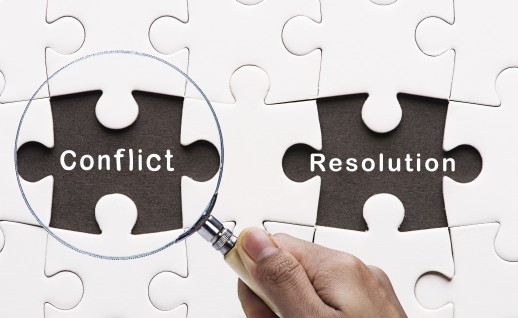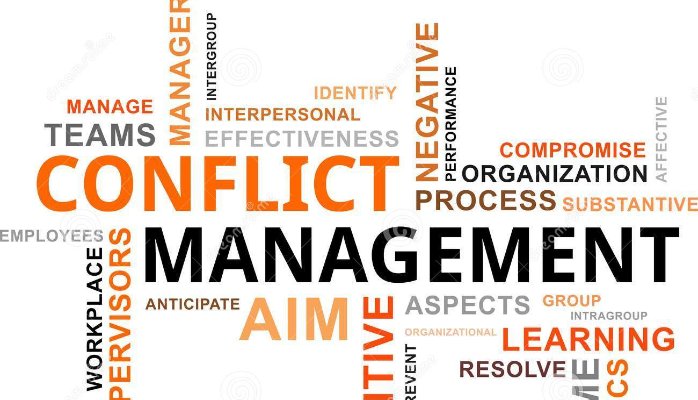Team Conflict Management: for a better, happier working place
Wednesday’s coffee break with <ALDONA BUDNA>
Understanding conflict and its its process helps us effectively manage our behavior and improves professional and personal relationships
Easier said than done – you would say?!
 Nonetheless, learning how to manage conflict improves interactions with others with outcomes of relief, understanding, better communication, and greater productivity for both the individual and the team.
Nonetheless, learning how to manage conflict improves interactions with others with outcomes of relief, understanding, better communication, and greater productivity for both the individual and the team.
Let’s have a look at what our expert in behavioral skills development says about Conflict Management!
Here is a real life example provided by Aldona Budna to help us grasp all what is at stake in team conflict.
Team conflict
Samantha has been a team leader for the past 7 years. Due to organizational restructure her team went under drastic changes. Redundant roles cut, yet new team members hire, new positions and responsibilities allocation: she had to face new challenges and fully embrace the change.
For the outsiders it appeared that she acquired a high performing team.
In reality though Sam knew that the team started slipping into ‘storming’ phase. It came to my attention that team members started pushing many boundaries, leading to countless conflicting scenarios. Sam described it as a ‘typhoon season: grey clouds, pouring rain, thunderstorms and unbearable heat with stuffy air’…
Team conflict is emerging in a workplace almost among all the people that I coach. Each time individuals tell me their own point of view, about their or others incompetency to tackle challenges, lack of resources and skill set, lack of support form the line manager or subordinates.
Often people do not realize that conflict is contagious, can easily damage relationships, lower motivation and morale within the team and taking further: sabotage individual and team overall performance, which links to absenteeism, lower productivity and outputs.
Each time I met Samantha in the corridor I could see infancy of a meltdown. She explained it to me that she is facing a tremendous challenge with her team members, struggling to manage them with things going out of control.
We decided to grapple and confront the challenge.
In order to determine the causes of the problem and already existing internal damages I did a careful diagnosis of the situation. By conducting 1:1 sessions with each individual I aimed to take objective stance and understand each of them: their point of view, personality type and dynamic within the team. I managed to delve into the dilemma and channel the core of this contagious supply.
So why were they experiencing conflict within the team?
- Management Style. Unclear reporting line, which increased competition and attention seeking from individuals but also lack of crystal ownership and managerial responsibilities
- Personality differences. A pure combination of contrasting characters, sharing different communicating style and decision- making process. Each of them carrying different values and beliefs, having preferred learning style or time management approaches. These are just a few examples to name it…
As human beings we are hard- wired. Often some of ours behaviors and interactions with others slip into commonality, default and is put into habitual way of dealing or tackling situations. This is what happens in many working scenarios, no matter what field or industry you are in.
As an example one of Sam’s team members worked exclusively in silo. She wasn’t getting sufficient support form others, feeling micromanaged without autonomy in performing her own tasks. It was one of her ways to avoid criticism and conflict. Her behavior led to escalating miscommunication amongst the team members, lack of trust and poor problem- solving issues. As an outcome the team jeopardized mutual goals, under-performed and created individualistic favoritism and inequity within the team.
So how did we manage to improve the situation and avoid further conflict escalation?
Over the course of a few sessions Samantha and I looked into areas such as:
Number One: By using psychometric tools such as MBTI (Myers- Briggs Type Indicator) and SDI (Strength Deployment Inventory) I looked into personality types and helped the team explore their motivation behind their behavior. Individuals understood their differences, learnt how to appreciate colleagues’ strengths and respect each others’ values. They acquired skills how to give each other constructive feedback and developed stronger commitment to the team goal.
Number two: Team purpose and existence. We explored team values, which were agreed and followed by individuals. By prolonged yet structured discussions the team identified preferred communication style and decision making process. This involved commitment and ownership of actions from each individual.
Number three: Sam together with her team agreed on roles, responsibilities and reporting lines. The team gained awareness of expected performance management standards, identified support and resources needed to carry out their tasks.
Additionally, I suggested looking into Sam’s team priorities. Some of the questions I challenged her with: What are the objectives that you are currently working on with your team? What is the time frame? Can you determine the importance of the distress when priorities, relationship or team values are at stake?
Having the right understanding of conflict causes and being able to classify conflict between employees can enable you as a leader to mitigate the negative impact of conflict on others. Although conflict is inevitable, yet it has its positive sides too. Sometimes it can improve performance, foster creativity and finally build stronger relationships.
Remember, the more skillful you become as a leader in handling change and personal differences without inviting ‘typhoon’ into your environment, the more successful your team will become.
Don’t we all want to become better leaders?! Now, let’s get to it keeping in mind ALDONA’s inspiring advice.
thoughts for the week:
Because our speakers and trainers do care, Aldona chose to leave you with something to reflect about. Here are some inspiring thoughts that we would like to leave you with for the week. May this inspire you to better manage conflict in your team!
Conflict Management is a hot topic for good reason!
Have you ever wondered what is keeping you from getting sufficient support from your colleagues? or simply how to improve the situation at work and avoid further conflict escalation? Well, here is a little bit of advice from our Inspiring trainer:
10 ways to guide you through conflict resolution with you team:
1. Acknowledge the first signs of conflict
2. Discuss the impact with your team
3.Involve everyone and agree to cooperative process
4. Keep communications open
5. Actively listen
6. Put yourself into “others’ shoes”
7. List and verify facts and assumptions
8. Value opinions and beliefs
9. Don’t look for blame
10. Encourage solution
and remember
Having the right understanding of conflict causes and being able to classify conflict between employees can enable you as a leader to mitigate the negative impact of conflict on others. Although conflict is inevitable, yet it has its positive sides too. Sometimes it can improve performance, foster creativity and finally build stronger relationships.
Remember, the more skillful you become as a leader in handling change and personal differences without inviting ‘typhoon’ into your environment, the more successful your team will become.
Be the Inspiring Manager you always wanted to work for!
A little more about our Inspiring Author:
 Aldona Budna brings her global experience and knowledge about diverse cultures, mindset, behaviours and personal development. She specializes in behavioral skills development; management, leadership and effective team performance. She has designed and delivered a number of programs in some of the most fascinating places on earth: Japan, Australia, China, Thailand, Hong Kong, Dubai and more within both: corporate and public sector. She is the former employee of British Foreign & Commonwealth Office where she helped many diplomats develop and grow in their career.Aldona is the only facilitator and accredited practitioner in MBTI (Myers- Briggs Type Indicator) and SDI (Strength Deployment inventory) in the world, who delivered Conflict Management training in Pyongyang, North Korea.
Aldona Budna brings her global experience and knowledge about diverse cultures, mindset, behaviours and personal development. She specializes in behavioral skills development; management, leadership and effective team performance. She has designed and delivered a number of programs in some of the most fascinating places on earth: Japan, Australia, China, Thailand, Hong Kong, Dubai and more within both: corporate and public sector. She is the former employee of British Foreign & Commonwealth Office where she helped many diplomats develop and grow in their career.Aldona is the only facilitator and accredited practitioner in MBTI (Myers- Briggs Type Indicator) and SDI (Strength Deployment inventory) in the world, who delivered Conflict Management training in Pyongyang, North Korea.
Her enriched experience and stories make training programs memorable, diverse with successful learning outcomes.Her desire for learning and self-development is contagious. She helps others unlock their potential, improve competency capacity and team collaboration. Aldona helped many organizations and governments improve their productivity and effectiveness supporting by creative solutions and aligned to business objectives.
To discover more about Aldona Budna, click on this link to view his profile: PROFILE
By Marjolaine TIPAKA

